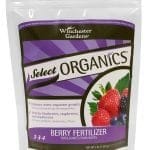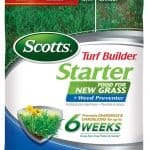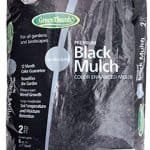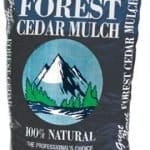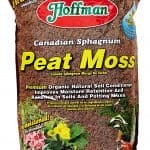Clay soil can be a real pain for any proactive gardener. So to get started on the right foot, you really need to think of what organic gardening approach you are going to take and how to use a mulch to avoid removing nitrogen from the soil (any clay soil lacks nitrogen, so you need mulch to improve the soil and avoid nitrogen deprivation.
Mulching can be a great way to improve clay soil. Mulching creates a barrier between the soil and air, which helps retain moisture and suppress weeds. It also helps create a smoother surface that is easier to work with.
If you’re looking to mulch your clay soil, there are a few things to keep in mind. First, make sure the mulch is dense enough to prevent water from being absorbed into the soil. Second, choose a mulch that will degrade over time so that it breaks down into smaller pieces that can be easily removed.
Improve Clay Soils With Mulching
Mulching clay soil is a great way to improve the condition of the soil while also protecting it from erosion. By covering the surface of the soil with a layer of organic matter, you can help to break up the hardpan and improve drainage.
Mulching also helps to keep the soil cool and moist during hot weather. It can provide a valuable food source for insects and earthworms. And it retains nutrients which means that the soil has less chance of becoming overly dry or too rich in a particular element.
5 Best Mulch For Clay Soil Reviews
Below are 5 of the top mulches that you can use to improve your soil.
- #1. Pillowganic Rice Hulls – Best Overall
- #2. Espoma PR8 Organic Perlite For Clay Soil – Best Drainage
- #3. Burpee Fine Grade Horticultural Vermiculite – Best Vermiculite
- #4. Coco Bliss Premium Coconut Coir Pith – Best Organic
- #5. Bonsai Jack 1/4 inch Pine Bark Fines – Best Around Trees
#1. Pillowganic Rice Hulls For Your Garden – Best Overall
The Pillowganic branded Rice Hulls mulch is a 100% biodegradable and organic product that can be used as a soil amendment and mulch.
It is made from the hulls of organically grown rice, which have been ground into a fine powder. Rice hulls are a natural source of carbon, nitrogen, and phosphorus, and they help to improve soil structure and drainage. They also suppress weeds and reduce moisture loss from the soil.
In essence, the Pillowganic branded Rice Hulls are absolutely amazing and we consider them to be the most effective and best mulch for clay soil in terms of performance.
It works better than perlite and vermiculite and actually comes at an even lower cost per coverage area. Although Pillowganic is not a name brand known like some of the other products we recommend, it is definitely quality and used by plenty of gardeners all over the world.
You simply need to mix this mulch with clay soil and it does a great job in breaking the soil. It also has this natural appearance that some people like, although in our opinion there are definitely better-looking mulches out there. One of the main selling points for rice hulls is that it gives you much better soil porosity which increases water retention while at the same time allowing your roots to expand.
- Can increase the water retention
- Increase nutrient-holding capacity
- Improve soil aggregation
- Provide better porosity
- Greater water infiltration
- Can blow slowly with heavy wind
#2. Espoma PR8 Organic Perlite As Compost For Clay Soil – Best Drainage
If you are looking for an organic mulch to improve clay soil, Espoma’s PR8 Perlite Mulch is a great option.
Made of 100% perlite, this mulch is lightweight and porous, which helps improve drainage and air circulation in clay soils.
PR8 also helps break up compacted soil and keep weeds at bay. In addition, the white color of perlite reflects sunlight, keeping the soil cool and helping to prevent erosion.
Now you understand why our next recommendation is the Espoma PR8 Organic Perlite. It is the best mulch for clay soil if you feel better and safer by using something from a big-name brand with excellent quality control. Espoma has been in the game for plenty of time and has the buying power and manufacturing facilities to make an excellent product. Ok, we get this and many others do as well.
While we don’t think that this perlite works as well as rice hulls, there is definitely something to be said about quality control and consistency. This is what Espoma excels at. Either way, you can’t go wrong with perlite as it does a pretty good job of loosening hard heavy clay soil and preventing compaction.
- Great brand
- Aerates soil
- Promotes root growth
- Helps loosen heavy soils
- Prevents compaction
- Not the best if you need optimum water retention
#3. Burpee Fine Grade Horticultural Vermiculite Mulch For Clay Soil – Best Vermiculite
There are many types of mulches that can be used in the garden, but one of the best is vermiculite. Vermiculite is a mineral that has been heat-treated until it forms small, lightweight particles. It is then used as a soil additive, or in this case, a mulch.
One of the benefits of using vermiculite is that it helps to keep the soil moist by slowing evaporation. It also helps to suppress weeds and prevents erosion. Another benefit of vermiculite is that it does not rot like organic mulches such as straw or hay, and it does not attract rodents like wood chips.
Overall, vermiculite is another ingredient that is really good at breaking up clay soil and helping it breathe. And we think the Burpee brand makes some of the best mulch for clay soil out there. The standout feature is that this is fine-grade vermiculite that is just better processed than most of its competitors. It is very lightweight and does a great job of retaining moisture and nutrient.
Many people like this brand because it does a great job of increasing root growth and a faster seedling. It also does a great job of increasing drainage and aeration in clay soil. While we don’t think it is as effective as the Pillowganic Rice Hulls in terms of aeration mentioned above. We find that it does promote faster germination of seeds.
- Impressive water retention
- Neutral pH
- Aerates soil
- Improves root growth
- Increases nutrient retention
- Does not rot and prevents mold and mildew
- Helps root anchorage
- Promotes rapid growth
- Improves soil quality
- Can be used alone or in mixes
- Can retain too much moisture
- A bit expensive at times
#4. Coco Bliss Premium Coconut Coir Pith To Improve Clay Soil – Best Organic
Coco Bliss is a premium-grade coconut coir pith that can be used as mulch. Obviously, it is made of coconut, which is high in organic matter and provides water retention capacity. Coco Bliss retains water well and helps to suppress weeds. It also breaks down over time to add nutrients to the soil.
As such, The Coco Bliss is yet another great product to use when growing anything in clay soil because it does a tremendous job of providing plenty of breathing space for your plant roots.
This is an extremely high-grade coconut coir and if you really want to get into the details it has low EC and pH levels. The brand achieves these low levels of EC by repeated washing with fresh water.
We think that this is a great way to start seeding and offers a nice organic alternative to peat moss. It also comes nice and compact and expands to get plenty of coverage area.
Also, everything is already pre-washed and pre-processed. With the Coco Bliss, you don’t have to lug around heavy bags of mulch and potting soil and certainly don’t have to worry about clay soil.
- Lightweight
- Easy to transport
- Great moisture retention
- Discourages pests
- Nice visual brown color
- Does not easily fade with UV
- Does not have much in the way of nutrients itself so needs extra fertilizer
#5. Bonsai Jack 1/4 inch Pine Tree Bark Fines – A Gardener’s favorite – Best Around Trees
If you’re looking for a top-quality mulch that will enrich your garden soil while helping to suppress weed growth, look no further than Bonsai Jack 1/4-inch Pine Bark Fines.
This 100% natural mulch is made from the finest pine bark fines available, and it’s perfect for use around trees, shrubs, perennials, and annuals.
Pine bark fines are especially beneficial because they help to retain moisture in the soil while allowing air circulation, which helps plants to thrive. In addition, pine bark fines are an excellent source of organic matter, which helps improve soil fertility and structure.
So the Bonsai Jack Pine Bark Fines are some of the cleanest and safest soil additives on the market and are definitely really good for use with clay soil. First and foremost, we like it because it definitely helps loosen up tough clay soil and increases the water retention of clay soil as a whole without oversaturating the soil.
It is definitely an excellent alternative to the mulches we mentioned above. We recommend it if the ones above just aren’t working out for you. It does a decent job aerating clay soil and keeping the roots growing. And clearly, it is not just made for bonsai trees. It can pretty much be used in any potted plant or clay soil. We would experiment with it a bit to see if it is a good fit for your garden.
- Lightweight
- Easy to transport
- Long-lasting
- When breaking down it enriches the soil with organic material
- Nice visual brown color
- Does not easily fade with UV
- Water pooling can cause bark nuggets to float and spread
Final words about mulch on clay soil
Clay soils are not the easiest ones to deal with, but with the proper mulch, you should be alright. Note that mulching clay soil is helpful in improving the soil structure and helping to retain moisture. And the type of mulch that is best for clay soils is based on organic matter, such as compost, grass clippings, or leaves.
Overall, Pillowganic Rice Hulls is the best garden mulch for clay soil. It is made from 100% organic rice hulls and is a natural soil amendment that helps improve drainage and aeration in clay soils. Espoma PR8 Organic Perlite For Clay Soil is a good second choice. It is made from 100% organic perlite and is a soil conditioner that helps improve drainage and aeration in clay soils.
FAQ – Frequently Asked Questions
Is it possible to Garden in Clay Soil? A Gardener Perspective
Yes, it is possible to garden in clay soil.
Now, let’s be honest. There is a lot of discussion about the quality of soil for gardening. In general, sandy soils are good for vegetables while clay soils are not. The concern with clay soils is that they can be hard and dense when wet, making it difficult for plant roots to grow. Additionally, clay soils can be very acidic or alkaline, which can also be harmful to plants.
However, there are ways to garden in clay soil if you take the time to amend it. One way to improve the condition of clay soil is by adding organic material and matter such as compost, manure, or leaf mold, but it is much easier if you use mulch. This will help to loosen the soil and add nutrients that plants need.
The decomposition process of the organic material will create and provide the much-needed natural aeration and drainage to your garden bed as well as act as a fertilizer.
Another way to improve clay soil is by planting perennials such as coneflowers, black-eyed Susans, and butterfly weeds. These plants will help to break up the soil over time and make it more hospitable for other plants. However, this is the longer route.
To be really deadly honest, it is best to use mulch so that you can start gardening right away.
When Should You Mulch Clay Soil?
Clay soils can be improved by the addition of organic matter in the form of mulch. The best time to add mulch is in the fall, but it can also be added in the spring.
Mulch helps to improve soil structure, water retention, and fertility. It also helps to reduce erosion and weeds. The type of mulch you use will depend on your climate and what is available locally. Straw, wood chips, or leaves are all good options for mulching clay soil.
How Can I Check The Drainage Of Clay Soil?
One of the main concerns people have about clay soils is their tendency to become waterlogged. This can be a particular issue in areas with heavy rainfall or where the soil sits on a flat or low-lying area. If you are concerned that your clay soil may become waterlogged soil, there is one simple thing you can do to check it.
The easiest way to test drainage is to dig a hole in the ground and fill it with water. If the water drains quickly, your soil has good drainage. If the water takes a long time to drain, your soil is likely waterlogged.
The best way to do this is by filling a hole with water and leaving it for about 24 hours. The hole should be 0.5m deep. Note that past 24 hours, if the water is still in the hole, then your drainage is not working. It’s time to add some mulch.
How Do I Improve Drainage On Clay Soil?
Clay soils are notorious for being difficult to work with and for poor drainage. This is due to the clay particles. These clay particles are so fine and so small that they tend to cling together forming small clumps. As such, the structure of the soil is naturally made to not drain.
But, improving drainage on clay soil in your garden can be done in a few ways: adding organic matter, breaking up the clumps of soil, and planting plants that tolerate wet conditions.
Adding organic matter such as mulch is a good way to improve drainage on clay soil. The organic matter will help to break up the clumps of soil and will also help to add moisture-holding capacity to the soil.
Another way to break up the clumps of clay soil when it’s really thick is by tilling or digging it up. This will amend the soil configuration and help the water to drain through the soil more easily. This is not our favorite option as the soil will come back to its original state, which is full of clumps, thick and heavy.
Planting plants that tolerate wet conditions is another way to improve drainage on clay soil. These plants will help to take up some of the excess water and will also help to improve the overall health of the soil.
Using any of the above technics will lead to water run-off allowing clay soil to recover quicker. These technics will also not dry the soil, but in fact, improve your clay soil.
Is Sawdust Good For Clay Soil?
One of the most popular methods for amending clay soil is to add organic matter in the form of compost, leaf mold, or well-rotted manure. Sawdust is also an organic compound, and gardeners agree that it is highly beneficial for clay soils. Experts in soil have researched this particular compound and evidence suggests that sawdust can help to improve soil structure, water retention, and nutrient availability. However, there is limited scientific research on the effects of sawdust on clay soils.
Most of the studies that have been done have been small-scale and short-term. A few studies have found that adding sawdust to clay soils can improve water retention and nutrient availability. More research is needed to determine the long-term effects of adding sawdust to clay soils.
So mixing or adding a layer of mulch in the form of sawdust to your clay soil should provide a good outcome as long as you do not add too much of it. Say a maximum of 1.5 inches lay on top of your soil and then mix it up with your soil. Obviously, sawdust is an organic matter and improves the fertility of your land.
However, there is an exception to the rule here with these clay soil types. The small wood particles found in sawdust can sometimes leach nitrogen from the soil. This will deprive your plants of critical nitrogen fertilizer and as such, they will end up suffering (and not growing).
Experts say that it is best to avoid using sawdust with short-seasoned crops such as tomatoes and peppers.
What plants thrive in clay soil?
Clay soil tends to be acidic, which some plants prefer. Shallow-rooted brassicas such as cauliflower or broccoli love this type of soil. This is also true for sweet corn, pumpkins, and squash. Plants with deep roots, such as carrots or beets, are also a better choice for clay soil because they can reach the nutrients and water at the bottom of the soil.
References
https://extension.oregonstate.edu/news/theres-no-break-people-who-garden-clay
https://www.doityourself.com/stry/how-to-loosen-clay-soil-with-bark-mulch








